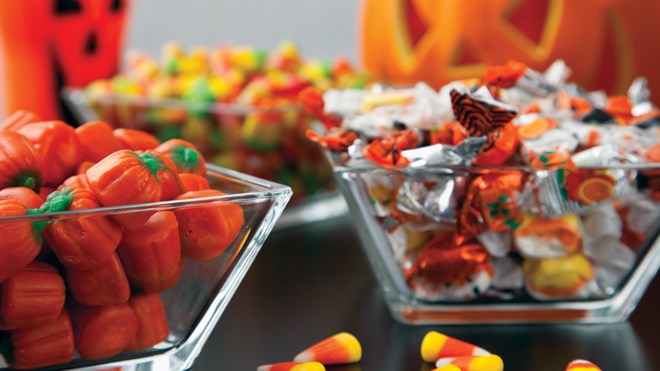Trick-or-treaters will be out and about on Oct. 31, collecting a cache of candies as they go door to door.
Dentists realize that people love their candy, and have a few hints on how to keep your teeth healthy during this time of sweet indulgences.
"Tooth decay does not develop from sugar alone, it comes from poor oral health habits and letting candy sit on teeth for long periods of time," said a news release from the Ontario Dental Association.
"As always, make sure you and your kids brush twice a day, clean between your teeth daily and see your dentist regularly for dental exams."
When it comes to the sweet treats that kids will be stockpiling, not all candies are created equal and some are worse for your teeth than others.
The Good: Chocolates cause the least damage to your teeth because they dissolve quickly in your mouth. Nuts, sunflower seeds and sugarless gum are also great options.
The Bad: Lollipops, jawbreakers and other hard candies take a long time to break down and can damage dental work and chip teeth.
The Ugly: Sticky treats like raisins, toffee, fruit roll-ups and caramels get lodged in the teeth and that can cause decay. Sour candies are chewy and their high acid content can erode tooth enamel.
“Children can enjoy the spoils of their trick-or-treating, relatively horror-free, but keep in mind that candy should be a treat, not a part of your regular diet,” said Ontario Dental Association president Dr. Jack McLister.
“There is sugar in other foods you eat, so for your oral health and overall body health be mindful of how much sugar you consume, especially during Halloween.”
Try incorporating healthy, teeth-cleaning snacks like vegetables, fruit or cheese along with the candy.
It’s also a good idea to have a set time for children to raid their stash of sweets instead of disbursing it throughout the day, which would let candy linger on their teeth for hours.
The best “candy time” is after a meal because the saliva produced while eating will help protect their teeth.
